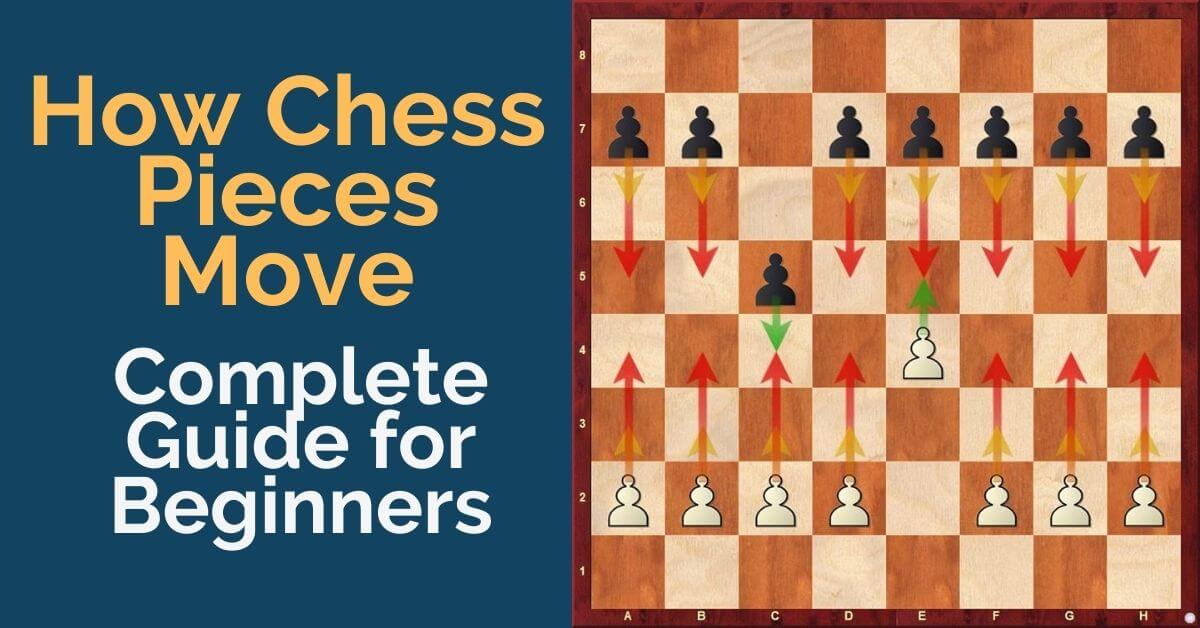
If they land on an opposing piece, it is captured.Ĭhessmen: The Rook (Also known as the Castle) They move in an "L" shape (see the diagram). The Knight has the unique trait of being able to 'leap' over other pieces. There are two Knights for each player on the chessboard, situated between the Bishop and the Rook.
CHESS PIECE MOVES DIAGNOLLY FREE
Of course, if that obstruction is an opposing piece, they are free to capture it! They can move any number of spaces on the diagonals as long as they are not obstructed by another piece(see the diagram). One Bishop starts on a white square, and one starts on a black square. You can see that this means that the Bishop is bound to the color square it starts on. These pieces move along the diagonals of the chessboard. There are two Bishops for each player on the chessboard, situated next to Queen and the King, respectively. However, she is not limited to just one space - she can move any number of spaces in any direction, as long as she is not obstructed by another piece (see the diagram) Of course, if that obstruction is an opposing piece, she is free to capture it! Like the King, the Queen can move in any direction. The game is not over when she is lost, but if your opponent has a Queen and you do not, you may find yourself at a considerable disadvantage! She is placed next to the king, on her own color. The Queen is often considered the most powerful piece on the chessboard. "Castling" is described in the special moves section below. This means the king can never be in the space adjacent to the opposing King. He can never move in to "check" (where he is threatened by another piece).

The King in chess can move one space in any direction (see the diagram). If he is checkmated (see objectives, below) the game is over! The King is the most important piece on the chessboard. Chess rules are surprisingly easy to learn, yet can take a lifetime of hard work to master! Part 1: The Chess Pieces While chess sets have sometimes become fanciful pieces of artwork and decoration bringing elegance to most any home, chess endures first and foremost as a classic game of skill and strategy, with nearly limitless combinations and possibilities. Most Believe the origins of chess begin in either India or Asia many thousands of years ago. What Are The Rules of Chess?Ĭhess is one of the oldest and most popular board games in the world. Now you'll know what to do with those chess sets that have been collecting dust in the closet. One Problem: You don't know the rules yet! Never fear, we have included the basics of the gameplay below. So you now have your chess set and you're ready to go. View Chess Computers, Books, and SoftwareĪ Guide to Rules of Chess & Chess Setup (How do I use this chess set, anyway?).
:max_bytes(150000):strip_icc()/illustrated-guide-to-chess-pieces-611547_v3-777101f35fb74a6c89c5daa058954683.png)


For example, the Xiangqi Chariot moves identically to the chess Rook, while the Xiangqi Horse has a similar L-shaped movement as the chess Knight. Some pieces in Chinese Chess have similarities to chess pieces in how they move or their strategic purposes. Are there any similarities between Xiangqi pieces and Chess pieces? The graphics on both sides' pieces are identical, avoiding any language barrier. If you are unfamiliar with the Chinese language, it is recommended to use the graphical pieces on when starting to learn Xiangqi. The characters essentially mean the same thing though. So the ancient Chinese made the characters different on each side for easy identification. This is because, in ancient times, not everyone could afford colored ink to differentiate the red and black pieces. One unique characteristic of standard Xiangqi pieces is that the Chinese characters on each side's pieces are different. Why there are more than one Chinese name for a Xiangqi piece?


 0 kommentar(er)
0 kommentar(er)
